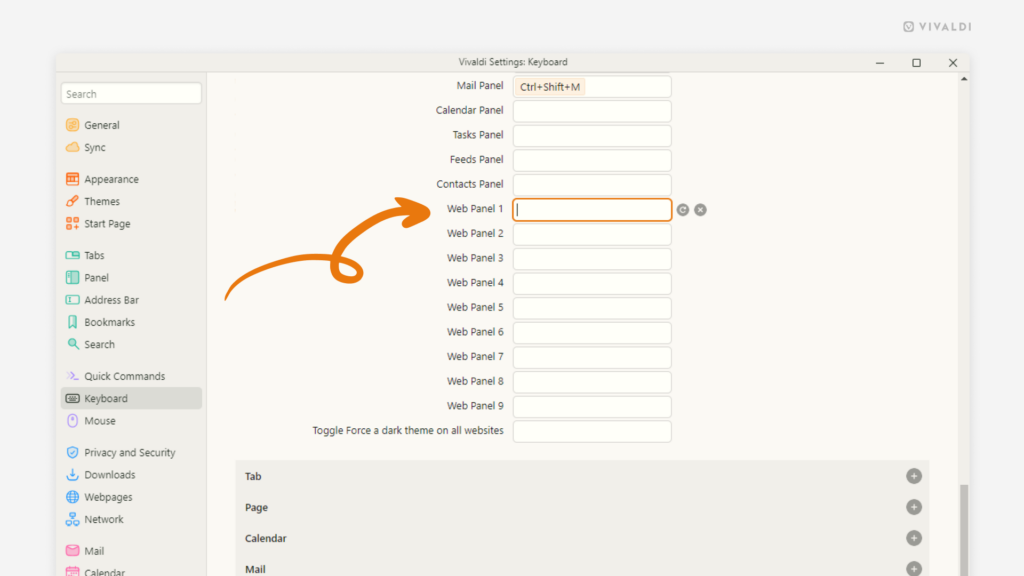Vivaldi Tips
A huge collection of Vivaldi browser tips, tricks and hacks.
Tip #611
5 декабря, 2024
View completed tasks in the Tasks Panel with one click.
There’s no better feeling than marking a task complete and seeing it disappear from view. To revel in that nice feeling some more, you can bring all completed tasks back into view and admire all you’ve accomplished. Or, in the unfortunate event, mark a task as incomplete again.
To view completed tasks:
- Open the Tasks Panel.
- At the bottom of the panel, click on «Show Completed Tasks».
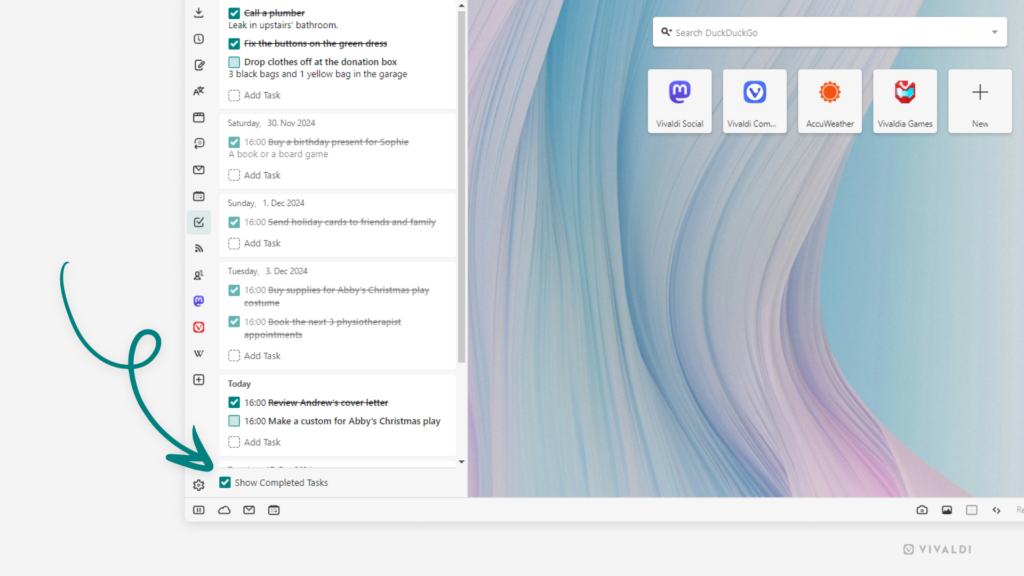
Tip #610
4 декабря, 2024
Reopen closed Web Panels instead of adding them again.
Adding new Web Panels is pretty straightforward in Vivaldi, but when it’s a Web Panel you’ve already had on your browser’s sidebar, it’s even easier to restore it.
To reopen a Web Panel:
- Right-click on one of the Panel buttons.
- Select «Closed Web Panels».
- Click on the closed Web Panel you want to add back to the sidebar.
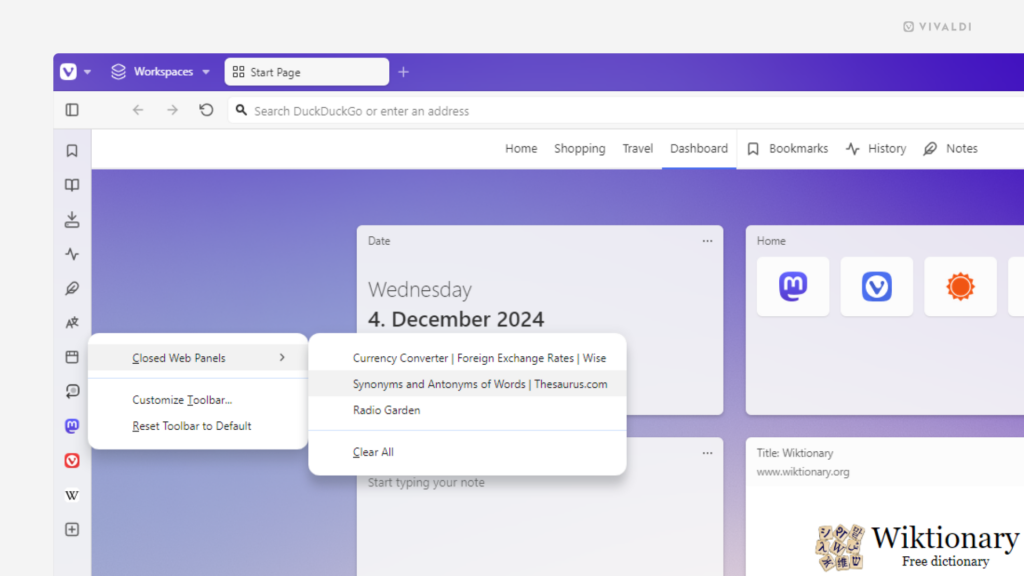
Tip #609
3 декабря, 2024
Hide spoilers and sensitive content in your Vivaldi Social posts behind content warnings.
Whether to discuss the latest hit show or a serious topic likely to trigger negative emotions in many, adding content warnings allows readers of your Vivaldi Social posts to decide whether they want to read your post or skip it.
To add content warnings:
- Write the post you want to share.
- On the composer’s menu at the bottom, click on
 «Add content warning».
«Add content warning». - Optionally, above the post’s content, add a hint to what the hidden post is about.
- Click «Post» to publish it.
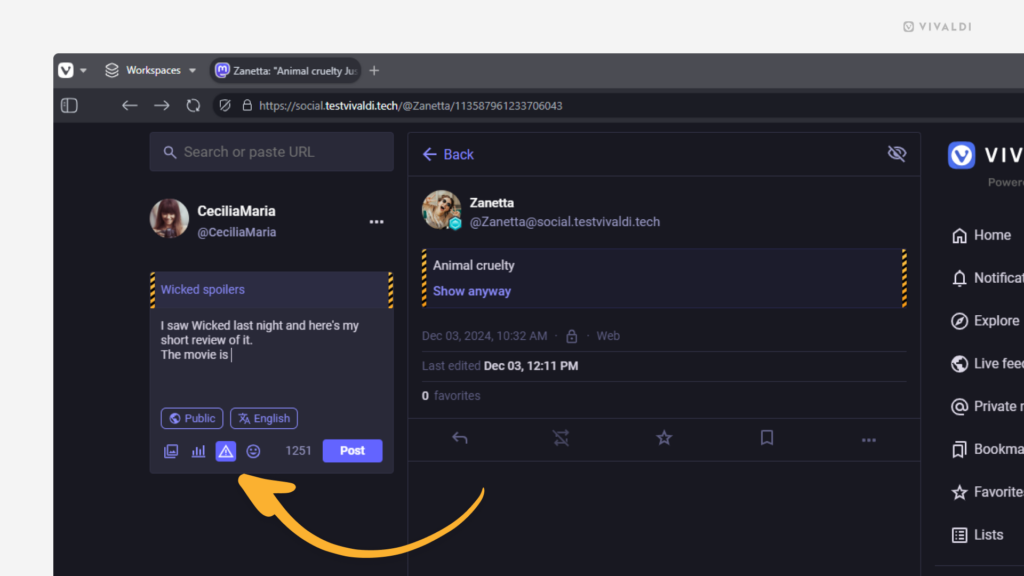
Tip #608
2 декабря, 2024
Export saved passwords from Vivaldi on Android.
When you need to move passwords from one place to another and Vivaldi Sync is not an option, doing it in bulk is definitely faster than copying the login credentials over one by one. Like on desktop, you can export the passwords you’ve saved in the Vivaldi browser as a CSV file.
But act cautiously! Your passwords will be exported and downloaded as a text file. They will be visible to anyone and any app with access to the folder in which the file is saved.
To export passwords on Android:
- Go to Settings > Password Manager.
- Tap on the 3-dot menu in the top right corner and select «Export passwords».
- Enter your device’s lock screen PIN/password/etc.
- Read the caution message and if you want to proceed, tap «Export passwords».
- Rename the file, if you wish.
- Select the file folder you want to save the CSV file to.
- Tap «Save».
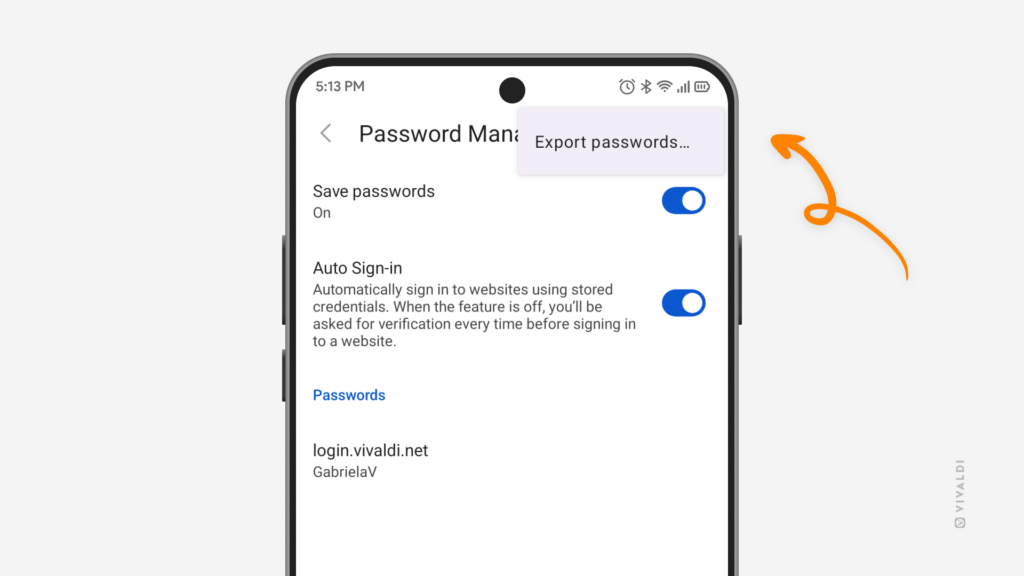
Tip #607
29 ноября, 2024
Filter unread, recent, and popular Forum posts by category.
When the Forum’s been active and you have a lot to catch up with, you can focus on the most interesting categories on the Unread, Recent, and Popular pages first and hide all others.
To filter categories:
- On the Unread, Recent, or Popular page, click on «All Categories» near the top right corner.
- Select from which categories you want to view posts from. Alternatively, type the category name in the text field that replaced the «All Categories» button.
- Click outside the menu to apply the filter.
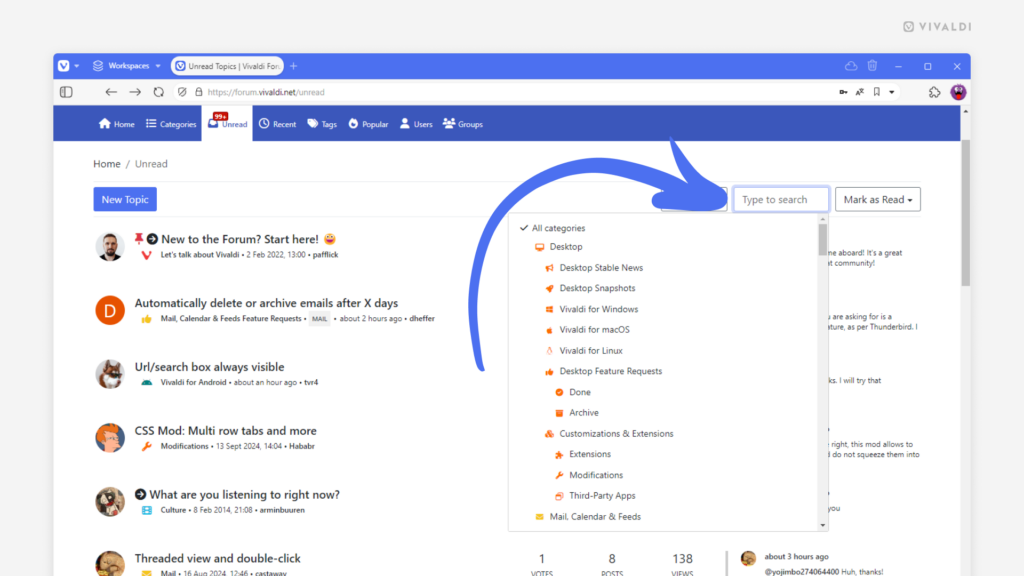
Tip #606
28 ноября, 2024
Sort your browsing history by page title, address or view count, in addition to chronologically.
You don’t need to go through your browsing history in chronological order to find a visited web page, though, admittedly it’s easier to find the page when you start seeing other pages you visited around the same time.
To sort history in the History Panel:
- Open the History Panel.
- Above the list of entries, click on «Sort by Date».
- Select between:
- Sort by Title
- Sort by Address
- Sort by Page Views.
- Optionally, switch sorting from ascending to descending or vice versa.
To sort history in the History Manager:
- Open the History Manager.
- Click on the column header you want to sort by.
- Click again to reverse the order.
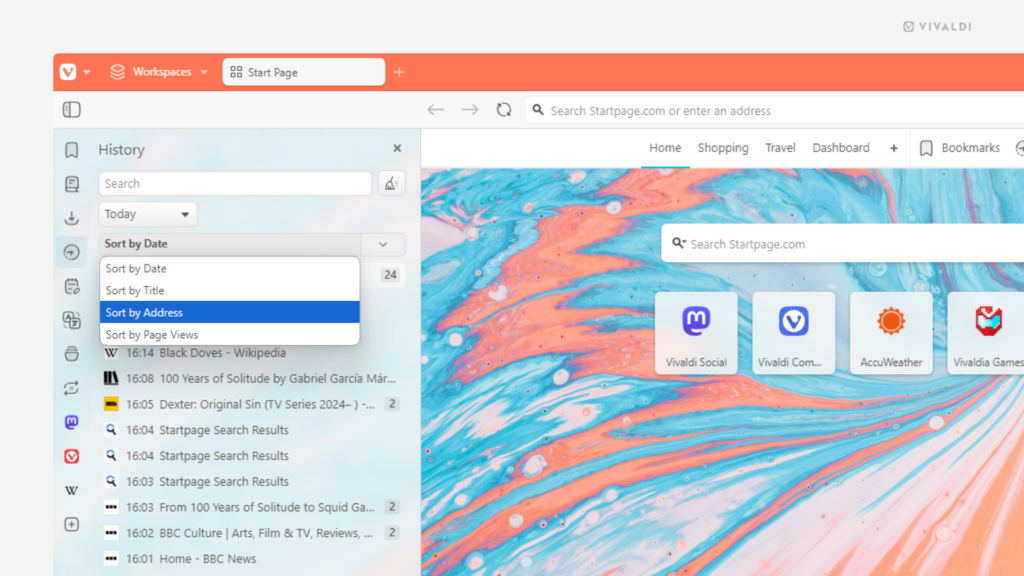
Tip #605
27 ноября, 2024
Share links of web pages you have open in Vivaldi on iOS effortlessly with others.
To share a link from your iPhone or iPad, you can tap on the Address Field to copy the link and paste it in some other app, but why do that when there’s a more convenient option.
To share a link of the active tab:
- Open the
 Vivaldi menu.
Vivaldi menu. - Tap on «Share Page».
- Choose the app you want to share the link with or one of the other sharing options available on iOS.

Tip #604
26 ноября, 2024
Decide which outgoing emails should get your signature and which should not.
A signature is a personalized section that is automatically added to the end of messages you send from Vivaldi Mail. When you’ve created a signature in Mail settings it’ll be added all new emails you start writing. Optionally, you can add the signature also to reply emails and emails you’re forwarding.
To review signature settings:
- Go to Settings > Mail > Mail Accounts.
- Select an account.
- Add a signature, if you don’t have one already.
- Below the signature input field, decide whether, in addition to new emails you write, you also want to include the signature in replied and forwarded messages.
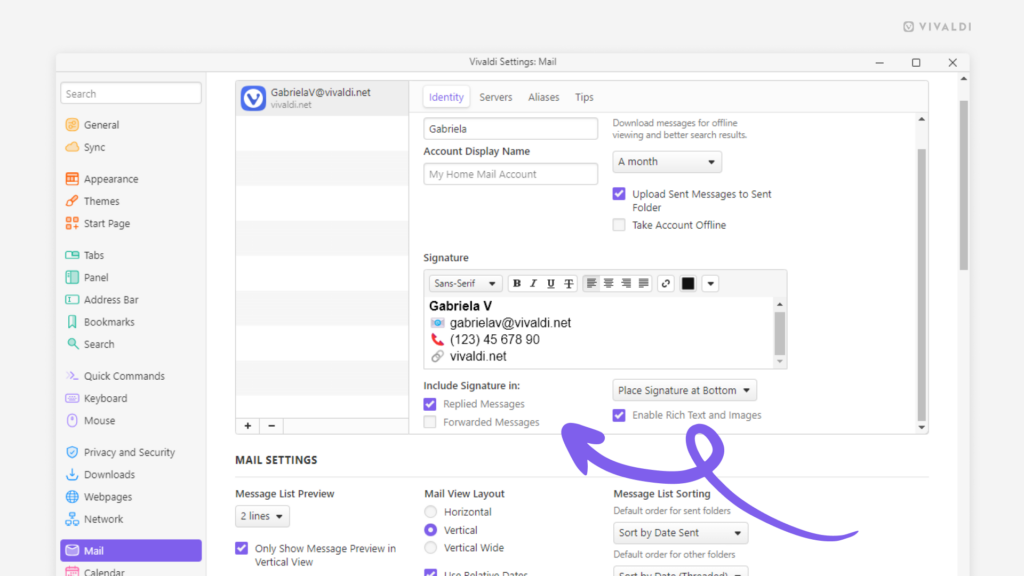
Tip #603
25 ноября, 2024
Start fresh by deleting History and other browsing data in Vivaldi on Android.
It can be convenient to find a page you recently visited or autofill forms with your information, but it’s also good to get rid of unnecessary data every now and then. In Vivaldi on Android you can choose what to delete and for what time period.
To delete your browsing data:
- Open the History Panel and tap on the
 broom icon in the bottom right corner.
broom icon in the bottom right corner.
Alternatively, go to Settings > Privacy and Security > Delete browsing data. - Select the time range you want to delete data for.
- Select the data types you want to delete.
- Tap on «Delete data».
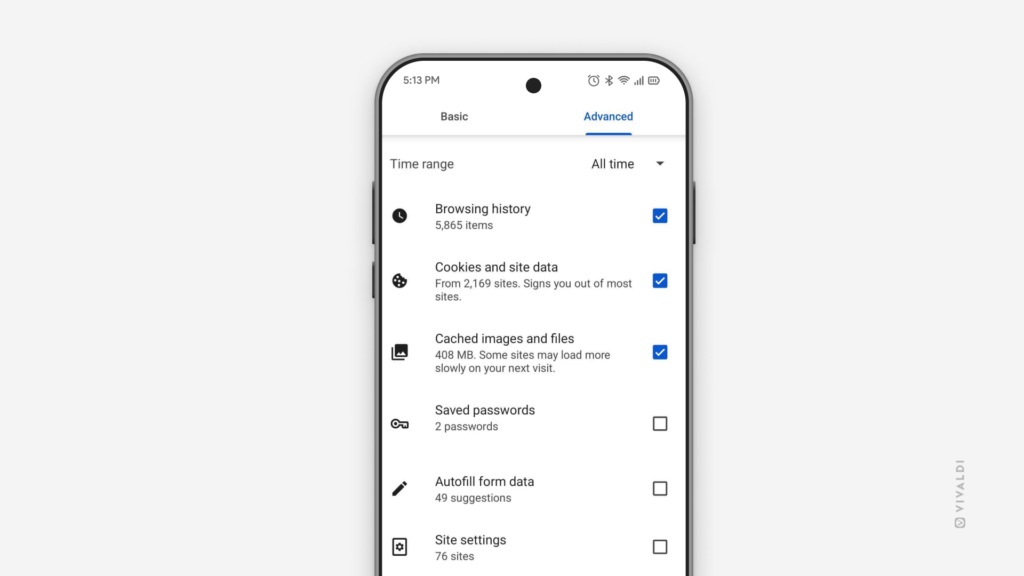
Tip #602
22 ноября, 2024
View and access your most visited websites from the Top Sites Dashboard widget.
Top Sites offer a quick access to the sites you visit most often. Based on your browsing history, this feature ensures you spend less time searching for the websites you frequently use.
To enable Top Sites:
- Go to the Dashboard.
- Click on «Add Widget» at the bottom of the page.
- Click on «Top Sites».
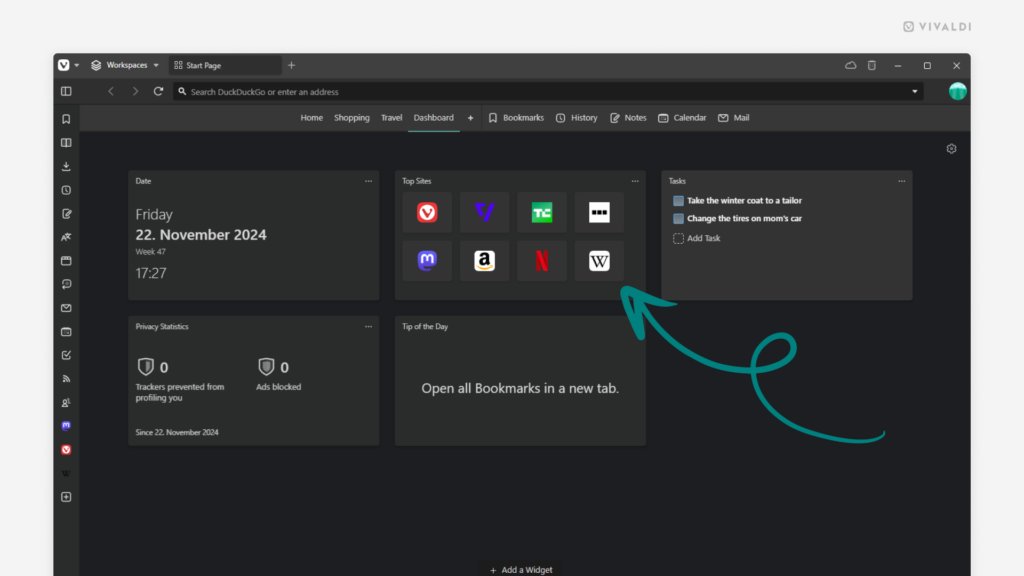
Tip #601
21 ноября, 2024
Choose how frequently should email drafts be automatically saved in Vivaldi Webmail.
When you’re writing an email in Vivaldi’s email service’s web view, Vivaldi Webmail1, your draft will be automatically saved every 5 minutes. But you can change the frequency or disable this option altogether.
To review the draft saving setting:
- Go to Settings > Preferences > Composing Messages > Main Options.
- For «Automatically save draft» select:
- Never
- every 1 minute
- every 3 minutes
- every 5 minutes
- every 10 minutes
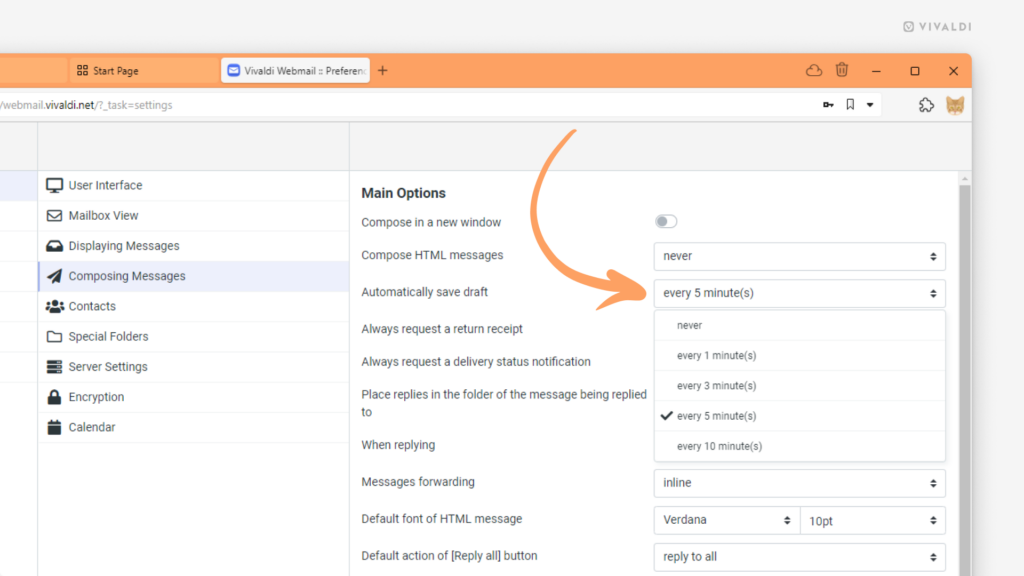
Tip #600
20 ноября, 2024
Create Keyboard Shortcuts for opening and closings individual Web Panels.
Keyboard Shortcuts are excellent for opening and closing Web Panels for a quick glance. But before you toggle Web Panels with Keyboard Shortcuts, you need to assign each panel its unique shortcut.
To add Keyboard Shortcuts:
- Go to Settings > Keyboard Shortcuts > View.
- Find the command «Web Panel 1».
- Click in the box next to it.
- Press the keys you want to use for the shortcut on your keyboard.
- Repeat with other Web Panels.
Then whenever you want to open one of the web panels just use the shortcut for both opening and closing the panel. If you already have one open, the shortcut will switch focus to the one you need.
